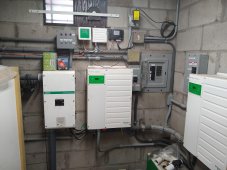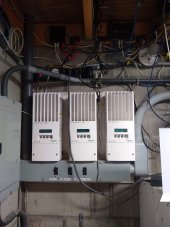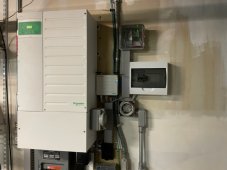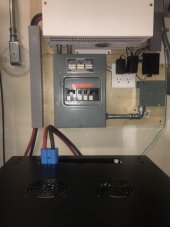With my batteries hiding in my garage, I don't have your heat issue. They are up to about 86F (30C) now, with the outside air at 95F in the shade on my north side porch. My other outside air temp sensor is still out of the sun under the eve on the north side of the house. That one shows 102F because it is not far enough under the roof and it seem to be getting some radiated/conducted heat from the bottom of the roof overhang. Have you measure the real watt hours it takes to run the chiller?
Yeah, I wish I had that option. It was my original hope, but that wasn't going to pass inspection.
When it's hot out the pack gets up to ambient even with 2" of foam insulation and a passable air seal on the lid.
To answer your question on useage.
There's 3 components to the chiller.
Pump 8 watts
Evaporator fans 14 watts
The one variable is the compressor.
I just measured the current at 85 ambient and got 1.3 amps at about half speed. But, when the ambient temps are higher, that could easily double.
I decided to turn down the speed, in hopes that lower cooling but more coolant movement would better distribute the heat. When I left the current was at 0.7 amps for the compressor, basically just above the minimum of about 0.55 amps.
So, the rough math puts that at 150 Wh to run the chiller for one cycle.
At the lower speed the chiller ran for 2 hours.
I'm not sure it limited the temperature differential.
But, the worst news is not a surprise for anyone. I've got a coolant leak ?
This coming weekend I'll be taking out the top pack to address the leak I found and check for others.
Luckily it is a small leak.










